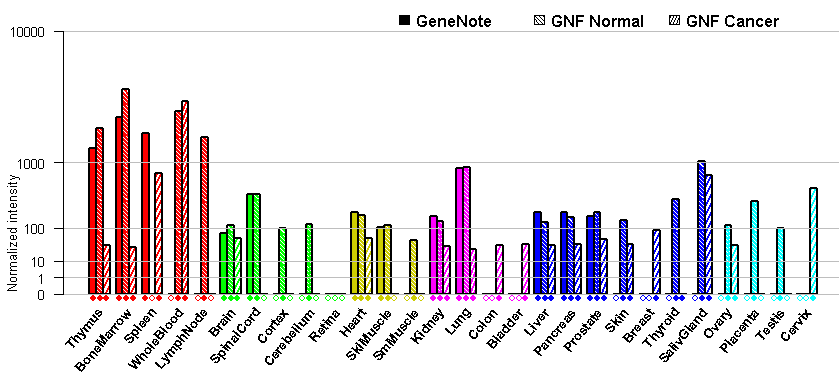Alias (According to NCBI)
- D2S201E
- HM89
- HSY3RR
- LAP3
- LESTR
- NPY3R
- NPYR
- NPYY3
- NPYY3R
- WHIM
- fusin
- PROBABLE G PROTEIN-COUPLED RECEPTOR LCR1 HOMOLOG
- chemokine (C-X-C motif) receptor 4
- chemokine (C-X-C motif), receptor 4
- chemokine (C-X-C motif), receptor 4 (fusin)
- neuropeptide Y receptor Y3
- C-X-C chemokine receptor type 4 (CXC-R4) (CXCR-4) (Stromal cell- derived
factor 1 receptor) (SDF-1
receptor) (Fusin) (Leukocyte-derived seven transmembrane domain receptor) (LESTR) (LCR1) (FB22)
(NPYRL) (HM89) (CD184 antigen).
Description
(According to SwissProt)
Receptor for the C-X-C chemokine SDF-1. Transduces a signal by increasing the intracellular calcium ions level. Involved in haematopoiesis and in cardiac ventricular septum formation. Plays also an essential role in vascularization of the gastrointestinal tract, probably by regulating vascular branching and/or remodelling processes in endothelial cells. Could be involved in cerebellar development. In the CNS, could mediate hippocampal-neuron survival. Acts as a primary receptor for some HIV-2 isolates and as a coreceptor with CD4 for HIV-1 X4 viruses (lymphocyte-tropic HIV-1 viruses, also called syncytium-inducing (SI) strains). Promotes Env-mediated fusion of the virus.
- Chromosomal location
(According to NCBI, CGH: progenetix)
- Location: 2q21
- Orientation: Minus strand
- Size: 3,811 bases
- 1 Exon
- DNA Sequence: NT_005058
![]()
CGH (2q21): Losses (%) -3.9 Gain (%) 3.9
- m-RNA Sequence: NM_003467
- Size:1679 bp
- c-DNA Libraries: CXCR4
- Size: 352 amino acids; 39745 Da
- Sub cellular location: Integral membrane protein
- Protein domains:


- Tissue expression: PubMed Reference
- Human Protein Atlas (HPA) CAB011447
- OMIM: 162643
- PubMed: Early detection Diagnosis Prognosis Therapy